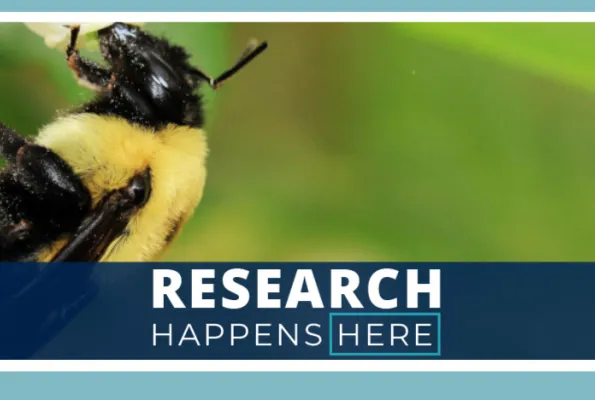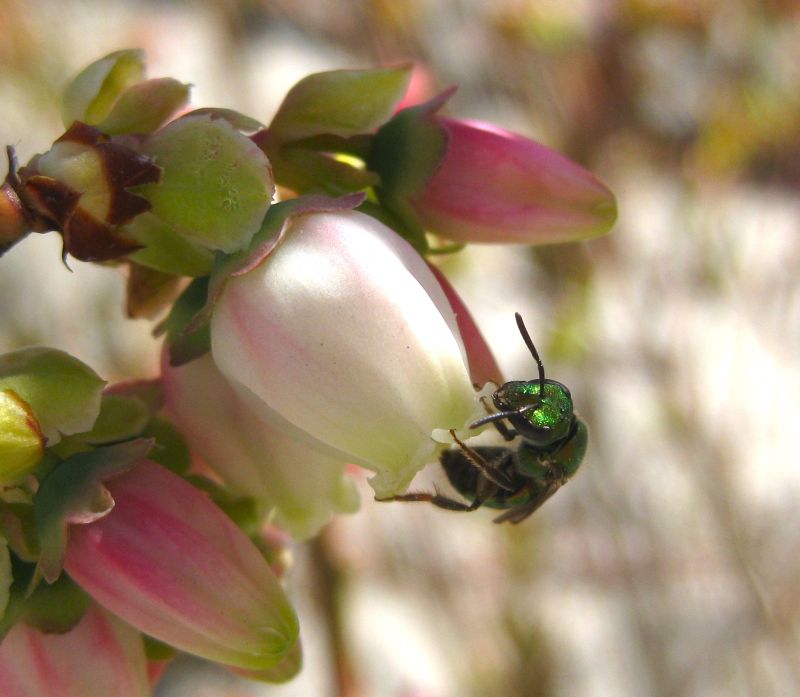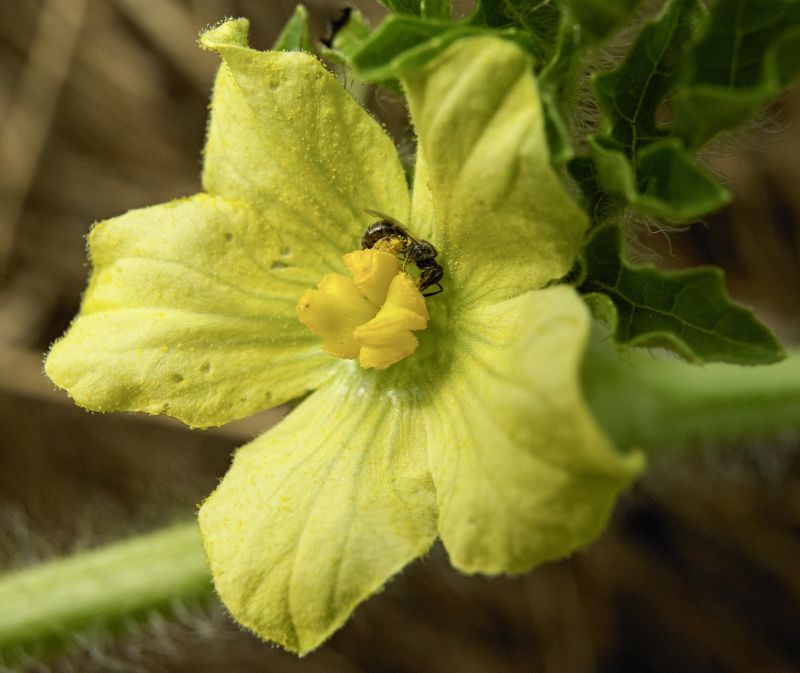
The importance of bee-ing together
As wild bees face new risks, their diversity becomes even more important for flowers and farms
From habitat loss to pesticides, many bees face threats to survival, and in turn, so do the flowers that depend on them.
However, simply saving a greater number of bees is not enough. Whether in fields, forests or farms, flowers rely on a wide range of pollinators to be most productive — including dozens of species of wild bees.
Which wild bees appear in a given field can vary wildly over time, from month to month and year to year. In fact, in a study by Rutgers University and the University of California, Davis, insect ecologists found evidence that the bee diversity required for crop pollination increases each year. In just one study region, the scientists identified more than 70 wild bee species over a multi-year period, each species helps fill gaps left by others.
It takes a bee village
Green bees, blue bees, tiny bees and huge bees. It's like a child's fairy tale, with each bee playing a unique role in its environment – however, the reason that diversity matters is a bit counterintuitive.
Different shapes and sizes help each bee fulfil an important role in the environment, pollinating specific plants and serving as food for specific predators. However, for a farm crop, with its single flower shape and uniform rows of plants, you might think one-bee-fits-all.
Instead, the flowers rely upon an ever-changing array of bees and other pollinators, with some species abundant early in the growing season, some abundant late, and others around for only a couple weeks.
With the continually changing numbers, species are sometimes important even when not abundant. It takes many types of bees pollinating together to provide enough activity for a good crop. Scientists call this the "insurance effect" of biodiversity, and it may become even more important in the future as the planet warms and different bee species respond differently to the changing environment.
Witnessing the workers
Much remains to be uncovered to understand the causes and effects, but the observations are clear. Reporting their findings in the research journal Nature Ecology & Evolution, Natalie Lemanski and Rachael Winfree at Rutgers and Neal Williams at UC Davis presented data they collected over six years.
Powered by a U.S. National Science Foundation grant to study the relationships between plants and pollinators and one to study how nature serves society, as well as funds from the U.S. Department of Agriculture, the researchers visited nearly 80 farms, each one on multiple occasions.
The researchers were looking not only at which bees were present, but also the threshold of bee diversity needed to pollinate the crops. What they found was, yes, diversity mattered in all growing seasons, but they also found the first evidence that the effect became more important with each year of observation.
So, while three or four bee species might successfully pollinate a crop in a given day, it actually might take two or three times as many species to meet that target in a growing season, and twice as many beyond that to keep the crop successful year to year.
Save the bees!
In a time of collapsing bee colonies, the new research could seem a downer. No one wants to see the end of watermelon or blueberries, or any of the hundreds of other crops that pollinators deliver.
However, reversing the bee collapse is a problem that every one of us can help solve.
Pollinators need a wide variety of plants, safe spaces free of pesticides where they can feed and do their work when not buzzing across a farm. To help the bees, even a pot of flowers on the porch can matter.
The more diverse your flowers, the more diverse your pollinators: if you want to see green bees and blue bees, you’ll want to have more than one type of flower outside your window. And if you plan ahead, you can attract some incredible insects.
To get started, there are a number of planting guides, such as from the Xerces Society and the Pollinator Partnership, which every year hosts Pollinator Week to teach how even with a small effort, anyone can boost a local ecosystem. In 2023, Pollinator Week will run from June 19 to June 25 and will involve a range of partners, including corporations, federal agencies and local communities all across the United States.
With a large population of people planting a broad array of plants, bees around the nation will bounce back.
Read the full story about the bee diversity study in Bee It Known: Biodiversity Is Critical to Ecosystems from Rutgers University. For more images of bees, visit NSF's Multimedia Gallery and NSF’s Virtual Background Collection.






